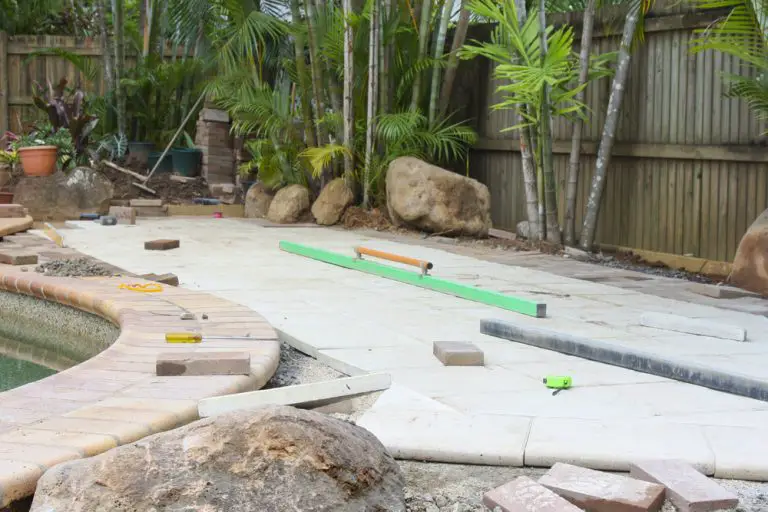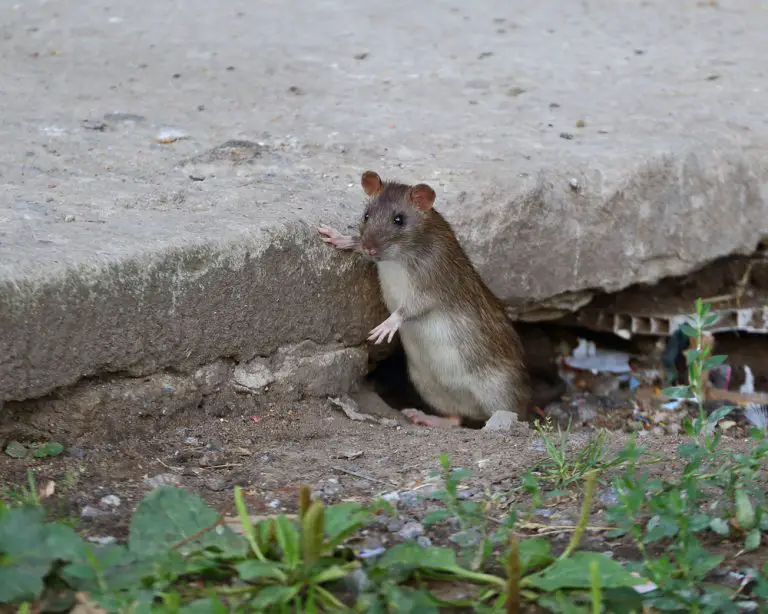How to Get Rid of Gnats in Your Yard
Gnats (Diptera) are small flying insects that are a nuisance to the yard and homeowners. Gnats measure about 1/8” long, making it almost impossible to identify them easily. They are both biting and non-biting species.
Non-biting species feed on plants, fruits, and compost, while biting ones are carnivorous and feed mostly on blood. But how do I get rid of gnats from my yard?
To get rid of gnats in your yard, remove any decaying material and stagnant water in your yard. Also, avoid overwatering as it can create puddles of water. Gnat traps and aerosol gnat repellents are also effective at eliminating gnats.
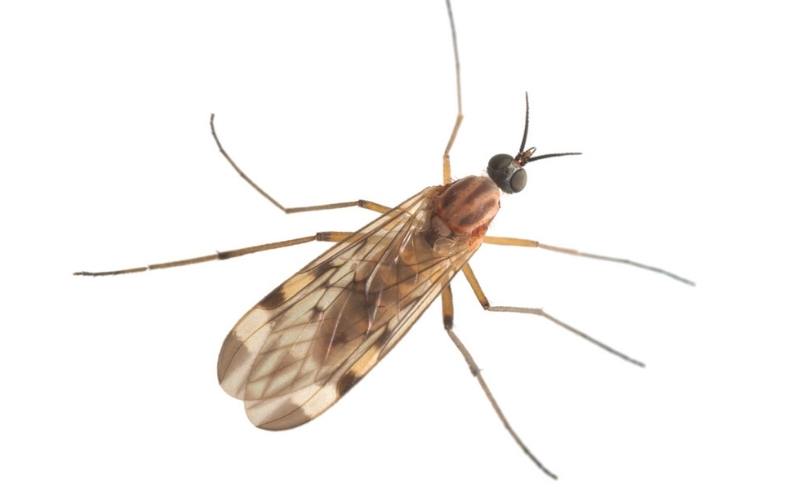
What causes gnats in the yard?
Gnats consist of many species of small flying bugs. Indoor gnats tend to be non-biting, whereas outdoor species do bite.
Gnats are attracted to certain scents; for example, fruit and sweet smells can attract gnats and flies into your yard.
They are also attracted to vinegar, honey, flower-scented shampoo, and soaps. Food spillage, garbage cans and composters that aren’t sealed, sink drains, pit latrine, and fresh flowers and vegetables in your yard can cause gnat infestation.
Fruit trees and vegetable gardens provide gnats with food sources. Over-watering your yard and outdoor lighting provides an optimal habitat for gnats.
Gnats are also attracted to humans, especially if you have sweet-smelling lotions, perfumes, and hairspray. Some detergents and fruit fragrances we use on our clothes can also attract gnats.
If you have gnats following you, you have the causes. Other things like perspiration, body heat, mucus, and tears from your eyes may also attract gnats.
How to get rid of gnats in grass
Yard gnats are also called grass flies or eye flies. There are various ways of getting rid of severe yard gnat infestations using available home remedies and commercial pest controllers. But first, the most crucial step is to identify, where possible, the kind of infestation you are dealing with.
Gnats have many species, and the earlier you identify them, the more efficiently you can control them.
1. Eradicate their breeding grounds
The first measure to get rid of gnats in your yard is to eliminate gnats’ favorable living conditions. These measures mostly involve physical tactics below:
- Remove the decaying organic matter in your yard. Gnats are known to feed on and get attracted to these composting materials. If the organic matter is inside composting bins, close the lid tightly.
- Get rid of stagnant water. Stagnant water provides a favorable breeding environment for these flying insects. The sooner you eliminate it, the faster you inhibit the breeding cycle, which helps eliminate severe gnat infestations.
- Reduce excess moisture in your yard. If you use a sprinkler or occasionally irrigate your yard, it may be time to manage the moisture level. High moisture levels also provide a good breeding environment for the gnats.
2. Use a gnat trap
You may need to use gnat traps to get rid of the swarms of tiny flies in the yard. Some of these traps can be made at home using available items in your kitchen. Typically, use the items that gnats are attracted to.
Below are some of the best DIY traps.
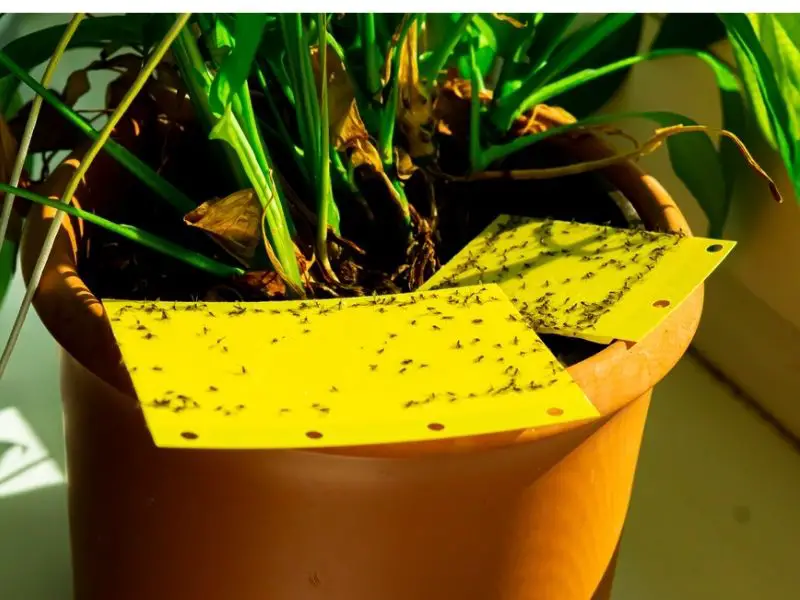
- Fruit trap: Since gnats are attracted to rotten fruits, you can use them as bait. Get a rotting fruit and wrap it in a perforated plastic bag. The gnats will enter and get stuck inside it. Alternatively, you can use plastic bottle traps designed for trapping gnats, and use fruit as bait.
- Candle traps: Gnats are attracted to light, especially at night. Take a candle and place it inside a partially filled candlestick with water. Light the candle and turn off the yard lighting. The trap works by burning the gnats; eventually, they fall into the water and drown.
- Apple cider vinegar trap: If you have a small infestation, take a few tablespoons of apple cider vinegar, add a few drops of dish soap, and a couple of tablespoons of sugar in a bowl. Mix or stir the contents and place it in the yard where there is a prevalent gnat infestation. The sugar and vinegar attract the gnats, while the dish soap traps and drowns them.
- Bug Zapper: Since gnats are attracted to light, bug zappers work best for larger insects but can still help reduce the number of gnats in your yard.
3. Hydrogen peroxide + water
Create a hydrogen peroxide solution and water your plants with it to eliminate any larvae on the potted plants. Mix 1 part hydrogen peroxide (3%) with 4 parts water. When poured onto the topsoil, you should observe bubbling, indicating that it’s working. The mixture kills gnat larvae on contact. If you enjoy DIY solutions, this is one of the best home remedies to try.
4. Gnat repellents
For yards where gnat infestations are not widespread, using gnat repellents can be an effective preventive measure.
Repellents work by deterring gnats from coming near your outdoor space, reducing the chances of them becoming a nuisance. You can try both homemade and commercial repellents:
Homemade repellets
- Lemon Eucalyptus Oil: Lemon eucalyptus oil is a natural gnat repellent and can be made by combining equal parts of lemon eucalyptus oil and water in a spray bottle. Shake the mixture well and spray it around your yard, paying attention to areas where gnats tend to gather.
- Lavender Oil: Lavender oil is another effective homemade gnat repellent. Mix a few drops of lavender essential oil with water in a spray bottle and apply it to areas where gnats are frequently seen to keep them at bay.
Commercial Repellents:
If you prefer ready-to-use solutions, there are various commercial gnat repellents available in the market.
I recommend products that contain ingredients like DEET, picaridin, or permethrin, as they have proven to be effective in repelling gnats and other flying insects.
5. Try professional pest control services
If you are dealing with severe and persistent gnat infestations, consider saving time and hassle by hiring a professional pest control provider like Sunday.
The best companies have the expertise to treat both gnat larvae and adult gnats with effective, customized treatments to completely eradicate the infestation.
Some companies even offer follow-up services to ensure your yard remains pest-free, allowing you to enjoy a peaceful afternoon outdoors.
The life cycle of gnats
Gnats go through four stages during their limited lifespan, which is about one week. However, within this short time, they can cause damage to plants and be a nuisance to human beings.
The life cycle comprises these stages: egg, larva/maggot, pupa, and adult.
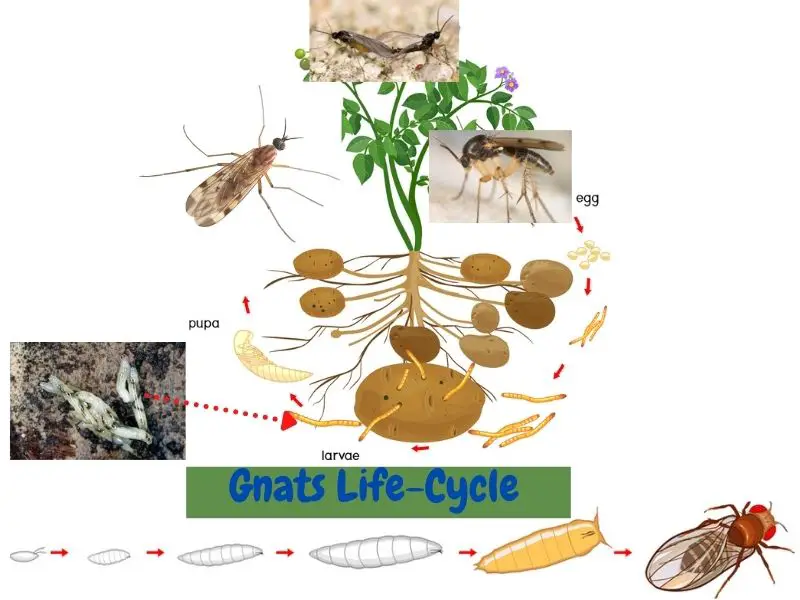
How to Prevent Gnat Infestation
Nothing can ruin your yard more than uninvited gnats swarming around your outdoor space. Although they may be harmless, taking preventive measures in your yard can help avoid gnat infestations.
The following measures will go a long way in ensuring a gnat-free yard:
- Control the watering patterns to allow the yard or outdoor garden to dry. Minimizing moisture and avoiding stagnant water will significantly reduce the hospitable environment for gnats to flourish.
- Keep your yard clean. Always bag grass clippings, rake leaves, and remove any dead plant material. Once they rot, these materials can attract fungus gnats to your yard. Consider using composting bins with lids for your kitchen waste materials. A clean yard will help prevent gnat infestation and the associated nuisances.
- Introduce gnat predators (Nematodes). Nematodes such as “Steinernema feltiae” and “Steinernema carpocapsae” have been effectively used to reduce the number of fungus gnats. These beneficial organisms live in the soil and primarily feed on newly hatched gnat larvae, preventing them from flying and reproducing the next generation.
- Minimize the use of organic fertilizer in your yard.
- Discard the top inch of soil from any gnat-infested potted plants. Removing the top layer of soil from infested potted plants will help eliminate both eggs and larvae, and be sure to dispose of it in a sealed container to break the gnat’s life cycle.
- Use sticky traps in your yard and change them often.
- Regularly check for signs of gnats in your yard. Cut a piece of potato and place chunks in the soil of your yard. After two days, check for any signs of gnats. If present, discard the potato in a sealed container. Fungus gnats prefer damp organic material to lay eggs on, so this method can help monitor their presence.
By following these preventive measures, you can significantly reduce the likelihood of gnat infestations in your yard, allowing you to enjoy your outdoor space without any unwelcome visitors.
FAQ
-
Are yard gnats bad?
Yard gnats can cause many problems in your yard, especially when there is a fungal disease outbreak, moisture, and rotting matter. However, not all gnats are bad; some enhance pollination, get rid of aphids, and other insects that could otherwise destroy or damage plants in the yard garden.
Non-biting gnats (such as eye and fungus gnats) are no problem for humans, whereas the biting ones (commonly the buffalo and sand gnats) can cause red bumps that are irritating and itchy.
Though rarely, gnat bites can sometimes lead to a life-threatening allergic reaction called anaphylaxis. It’s good to note the risks involved.

